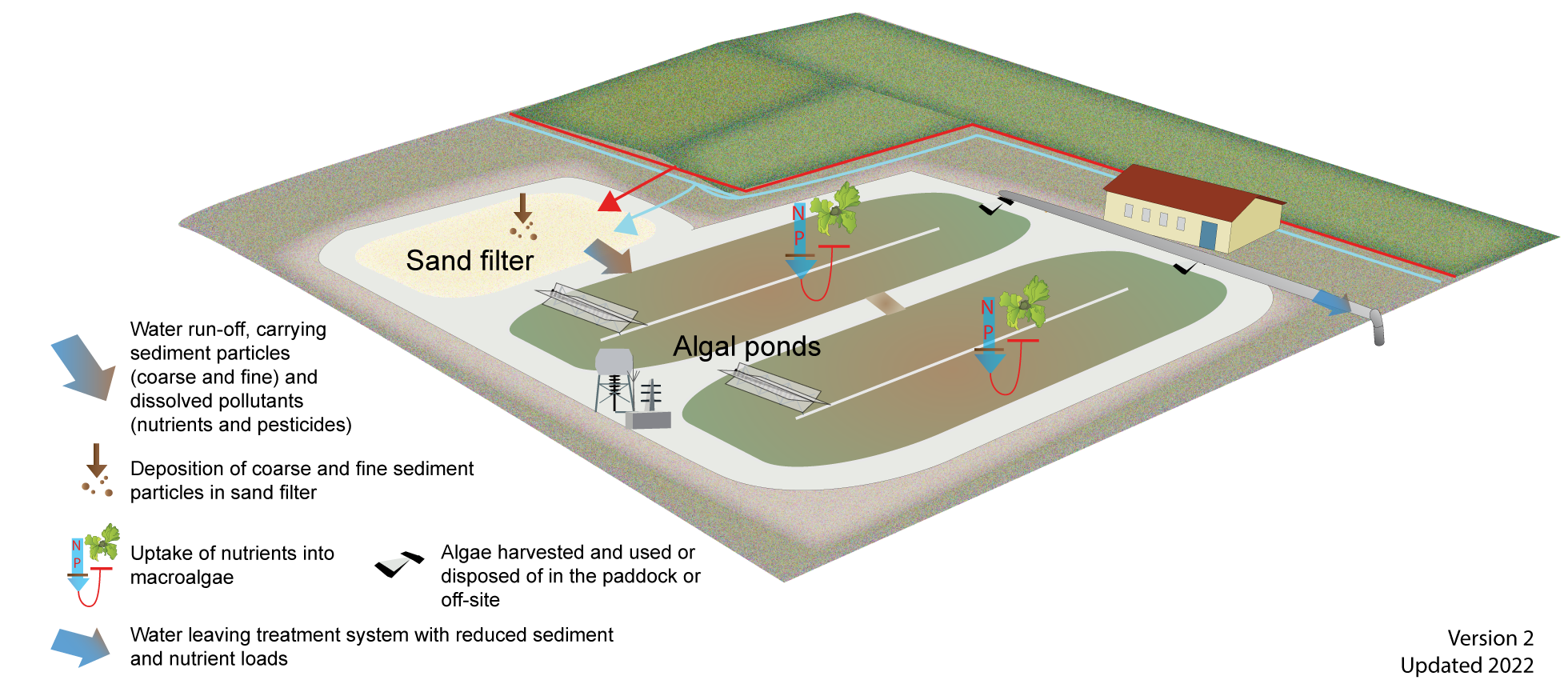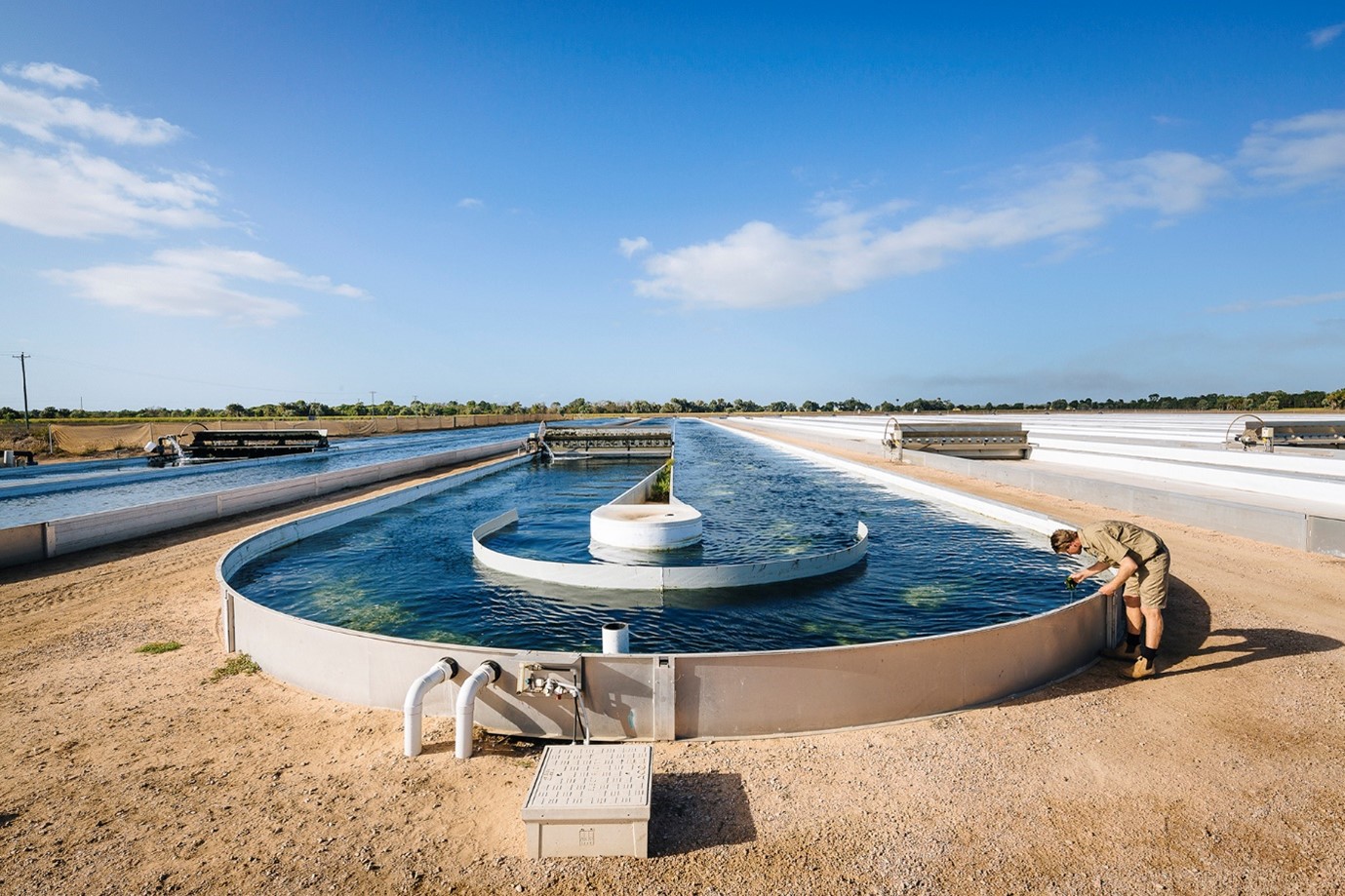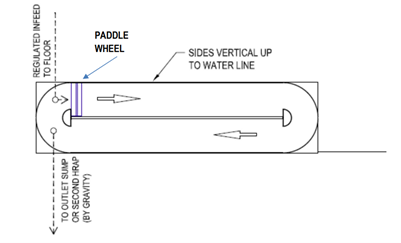|
|
Algae treatmentAlgae treatment — Planning and designSelect from the tabs below Site selectionPreferably within local catchment areas in the scale of 1000 Ha or greater. Access to power source for pumps and harvesting. Needs to be out of flood prone areas where the ponds may be inundated or in some way protected from floods. Needs full sun for the algae to grow, so suits sites without shade from building or trees. Located where the system will have access to regular water flow. These systems are designed for continuous operational wastewater flows rather than unpredictable environmental flows. They have been operated over multiple wet and dry seasons with quantified variation in productivity. There is limited capacity to manage flood events and heavy sediment loads. Sizing:Approximately 0.16-0.4% of catchment area is required[3][1]. Design
DisclaimerIn addition to the standard disclaimer located at the bottom of the page, please note the content presented is based on published knowledge of treatment systems. Many of the treatment systems described have not been trialled in different regions or land uses in Queensland. The information will be updated as new trials are conducted and monitored. If you have any additional information on treatment systems or suggestions for additional technologies please contact us using the feedback link at the bottom of this page. References
Last updated: 10 June 2022 This page should be cited as: Department of Environment, Science and Innovation, Queensland (2022) Algae treatment — Planning and design, WetlandInfo website, accessed 8 May 2025. Available at: https://wetlandinfo.des.qld.gov.au/wetlands/management/treatment-systems/for-agriculture/treatment-sys-nav-page/algae-treatment/planning-design.html |

 — Department of the Environment, Tourism, Science and Innovation
— Department of the Environment, Tourism, Science and Innovation




